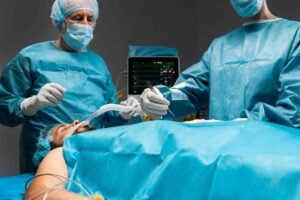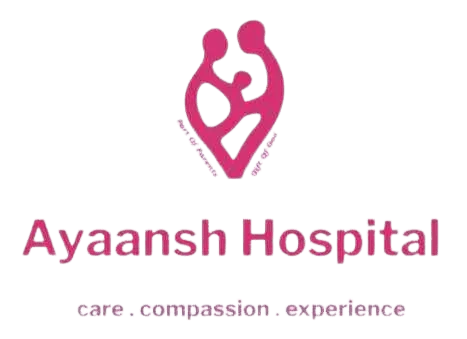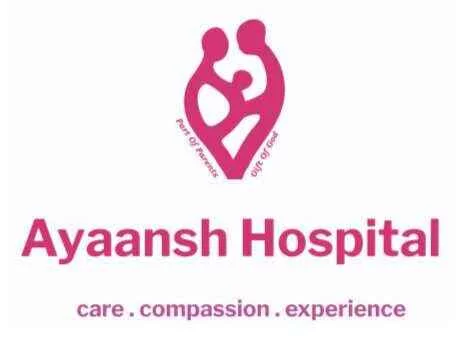Signs You Might Need Gallbladder Surgery
The gallbladder is a small, pear-shaped organ tucked under the liver, and though small, it plays a significant role in the digestion process. The gallbladder stores bile, a digestive fluid that helps break down fats in the food we eat. However, like many organs in the body, the gallbladder can sometimes cause issues that may require surgical intervention. In some cases, gallbladder surgery becomes necessary to relieve painful symptoms or prevent more serious health complications.
In this blog, we’ll take a closer look at the signs and symptoms that may indicate you need gallbladder surgery, explore the conditions that can affect the gallbladder, and discuss the various treatment options available, including surgery. Let’s walk through the important aspects of gallbladder health to help you make informed decisions about your well-being.
What Does the Gallbladder Do?
Before diving into the signs that might lead to gallbladder surgery, it’s helpful to understand what the gallbladder does. As mentioned, the gallbladder stores bile produced by the liver. After you eat, the gallbladder releases bile into the small intestine to aid in digestion, particularly in breaking down fatty foods.
While the gallbladder serves a useful function, it’s not absolutely essential for survival. In fact, many people live healthy lives without their gallbladder, which is why surgery is often the recommended treatment for gallbladder-related issues that cause significant discomfort or complications.
Common Gallbladder Problems
There are several conditions that can affect the gallbladder, each of which might necessitate gallbladder surgery. Some of the most common gallbladder problems include:
1. Gallstones (Cholelithiasis)
Gallstones are solid particles that form in the gallbladder, usually from cholesterol or bilirubin. Gallstones can be tiny, like grains of sand, or as large as golf balls. Not everyone with gallstones experiences symptoms, but when they do, it can cause a condition known as Gallbladder attack or Biliary colic.
2. Cholecystitis
Cholecystitis is inflammation of the gallbladder, which is often caused by gallstones blocking the ducts that carry bile. This inflammation can cause severe pain and other complications, sometimes requiring emergency gallbladder surgery.

3. Biliary Dyskinesia
This condition occurs when the gallbladder doesn’t empty properly. Biliary dyskinesia can cause pain similar to that caused by gallstones, even in the absence of stones. It may indicate that the gallbladder isn’t functioning properly, which might lead to the recommendation for surgery.
4. Choledocholithiasis
In some cases, gallstones move from the gallbladder into the bile ducts, causing a blockage that can lead to infection, jaundice, or pancreatitis. This is a more serious condition and might require urgent medical intervention, including gallbladder surgery.
5. Gallbladder Polyps
These are growths that form in the gallbladder wall. While most gallbladder polyps are benign, larger polyps may increase the risk of gallbladder cancer and could be a reason for surgery.
Now that we’ve identified the common gallbladder conditions, let’s explore the signs and symptoms that suggest you might need gallbladder surgery.
Symptoms That May Indicate You Need Gallbladder Surgery
Gallbladder issues can sometimes be mistaken for other digestive problems because many of the symptoms overlap. However, there are a few hallmark signs that specifically point to gallbladder trouble, particularly when they occur after eating fatty or greasy foods.
1. Severe Abdominal Pain (Gallbladder Attack)
One of the most common signs of gallbladder problems is severe pain in the upper right side of the abdomen, just below the rib cage. This pain often comes on suddenly and can last for several hours. It may also radiate to the back or right shoulder blade. This kind of pain is often referred to as a Gallbladder attack and is a common symptom of gallstones or gallbladder inflammation (cholecystitis).
If you experience frequent or prolonged gallbladder attacks, it may be a sign that your gallbladder is not functioning properly, and surgery may be required to remove it.
2. Nausea and Vomiting
Gallbladder problems often cause digestive discomfort, including nausea and vomiting, particularly after meals. While occasional nausea can happen for various reasons, if you notice it occurring frequently after eating, especially fatty foods, it could be a sign that your gallbladder isn’t working as it should.

3. Bloating and Gas
Feeling bloated, gassy, or experiencing indigestion are common signs of a gallbladder problem. These symptoms often occur alongside nausea and can be triggered after eating meals high in fat. If bloating and gas become persistent issues, it could indicate the need for further evaluation by a healthcare provider.
4. Fever and Chills
A fever, particularly when paired with chills and abdominal pain, can be a sign of gallbladder inflammation or infection. When the gallbladder becomes inflamed (cholecystitis), it can cause a bacterial infection, leading to fever. This is a serious condition that may require immediate gallbladder surgery to prevent further complications.

5. Jaundice
Jaundice, or yellowing of the skin and eyes, occurs when there’s a blockage in the bile ducts, preventing bile from being properly excreted from the liver. If gallstones move into the bile ducts and cause this type of obstruction, it can lead to jaundice. Jaundice is a warning sign that the liver is being affected, and prompt medical attention, including surgery, may be necessary to resolve the issue.
6. Changes in Stool or Urine Color
Gallbladder problems can also cause changes in stool or urine color. For instance, pale or clay-colored stools can indicate a bile duct blockage, while dark urine can be a sign of a liver or gallbladder issue. If you notice persistent changes in the color of your stool or urine, it’s important to consult a doctor.
7. Chronic Diarrhea
Frequent diarrhea (more than four bowel movements per day) that persists for more than three months may be related to a gallbladder problem, especially if other symptoms, such as abdominal pain or nausea, are present.
When is Gallbladder Surgery Necessary?
Gallbladder surgery, known as Cholecystectomy, is the most common treatment for problematic gallbladders, particularly when gallstones or other complications arise. It’s important to understand when gallbladder surgery is necessary and what the treatment options are.
1. Chronic Gallstones
If you experience frequent gallbladder attacks due to gallstones, your doctor may recommend gallbladder surgery. Even if gallstones aren’t causing constant symptoms, leaving them untreated can lead to complications like inflammation or infection.
2. Acute Cholecystitis
Acute inflammation of the gallbladder, especially when it’s caused by gallstones, usually requires prompt surgical intervention. If left untreated, cholecystitis can lead to serious complications such as gallbladder rupture or infection.

3. Biliary Dyskinesia
If tests show that your gallbladder isn’t emptying properly, surgery may be recommended even in the absence of gallstones. Removing the gallbladder can improve digestive function and alleviate the associated pain.
4. Obstructed Bile Ducts (Choledocholithiasis)
If gallstones move into the bile ducts and block the flow of bile, this can cause serious health issues such as jaundice, pancreatitis, or liver damage. In such cases, gallbladder surgery may be required to remove both the stones and the gallbladder to prevent future blockages.
5. Suspected Gallbladder Cancer
Although rare, if gallbladder cancer is suspected (particularly in the case of large polyps), surgery to remove the gallbladder may be necessary to prevent the cancer from spreading.
Types of Gallbladder Surgery
There are two main types of gallbladder surgery: laparoscopic cholecystectomy and open cholecystectomy. Your doctor will recommend the best option based on your condition and overall health.
1. Laparoscopic Cholecystectomy
This is the most common type of gallbladder surgery and is minimally invasive. During a laparoscopic cholecystectomy, the surgeon makes several small incisions in the abdomen and uses a camera (laparoscope) to guide the removal of the gallbladder. Most people recover quickly from this type of surgery, often going home the same day or after a short hospital stay.

2. Open Cholecystectomy
In some cases, an open cholecystectomy may be necessary. This procedure involves a larger incision in the abdomen to remove the gallbladder. Open surgery is typically required in more complicated cases, such as when the gallbladder is severely inflamed or if there are issues that prevent laparoscopic surgery. Recovery from open surgery generally takes longer than laparoscopic surgery, with a hospital stay of a few days.
Conclusion
Gallbladder problems can cause significant discomfort and, in some cases, lead to serious complications. If you’re experiencing symptoms like severe abdominal pain, nausea, vomiting, or jaundice, it’s important to seek medical attention to determine whether you may need gallbladder surgery. Understanding the signs of gallbladder trouble and the available treatment options can help you take control of your health and prevent further issues.
Whether through surgery or other treatments, addressing gallbladder problems promptly can help you live a healthier, pain-free life. If you’re concerned about your gallbladder health, consult your healthcare provider for a thorough evaluation and personalized treatment plan.


